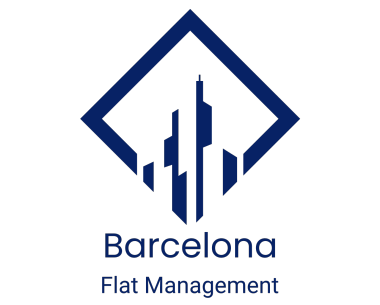Barcelona, a city where history whispers from every corner, is renowned for its enchanting historic neighborhoods. Amidst winding cobblestone streets and vibrant plazas, the city’s historic flats stand as timeless testaments to its rich cultural tapestry. These architectural jewels, with their intricate facades and soulful interiors, offer more than just a residence; they embody the very essence of Barcelona’s heritage.
In this exploration, we delve into how these historic flats harmoniously fuse their enduring charm with the demands of modern living, preserving the past while embracing the present.
The Architectural Legacy of Barcelona’s Flats
Barcelona’s architectural landscape is a canvas of history, painted with the diverse styles of its historic flats. These buildings, some dating back to medieval times, stand as a testament to the city’s evolving architectural narrative. In the Gothic Quarter, the flats are characterized by their narrow, labyrinthine streets and Gothic-style arches, transporting residents and visitors alike to a bygone era. Moving to the Eixample district, the scene shifts to the Modernisme movement, most famously embodied in the works of Antoni Gaudí. Here, buildings like Casa Batlló and La Pedrera showcase the whimsical, organic forms that define this style. These flats often feature distinctive elements such as colorful mosaic tiles, which create vibrant patterns on floors and walls, and ornate façades that exhibit a blend of intricate stonework and wrought iron balconies.
The interiors are just as remarkable, with high ceilings often adorned with elaborate moldings and frescoes. Large windows and balconies overlooking bustling streets or serene courtyards are also common, blending indoor and outdoor spaces seamlessly. This architectural diversity not only highlights the historical periods that Barcelona has traversed but also reflects the cultural and artistic fervor that has been intrinsic to the city’s identity.
Inside the Walls: Living in a Piece of History
Living within the walls of Barcelona’s historic flats is akin to residing in a living museum, each room narrating stories of the past. The interiors of these buildings are a harmonious blend of historic elegance and modern comfort. High ceilings create an airy, expansive atmosphere, often complemented by exposed wooden beams that add a rustic charm. Traditional balconies offer a private vista to the vibrant city life, while also serving as a quaint retreat for a morning café or an evening of contemplation under the starlit Mediterranean sky.
Residents often speak of the unique experience with a blend of reverence and affection. One local shared, “Living here is like being in constant dialogue with history. Every corner of the flat has a story, and the old wooden floorboards creak in a way that’s both comforting and evocative of the past.” Another resident commented, “It’s a privilege to be a custodian of such a piece of history, to wake up every day surrounded by beauty that has stood the test of time.”
However, preserving these architectural gems comes with its challenges. The delicate balance between maintaining historical integrity and providing modern amenities is a constant endeavor. Retrofitting these spaces with contemporary necessities like efficient plumbing, electrical wiring, and internet connectivity, while ensuring the preservation of original features, is a meticulous and often costly process. Moreover, adhering to strict heritage conservation regulations can add layers of complexity to even the simplest renovation. Yet, despite these challenges, the residents and the city alike remain committed to preserving these historical treasures, recognizing that they are not just structures of brick and mortar, but vessels of Barcelona’s rich and vibrant history.
Modern Adaptations: Merging the Old with the New
The intricate task of adapting Barcelona’s historic flats to contemporary living is a delicate dance between past and present. Architects and designers are ingeniously integrating modern amenities into these age-old structures, ensuring comfort without compromising their historical essence. Kitchens and bathrooms, once minimal and utilitarian, are now being transformed with state-of-the-art appliances and fixtures, melding functionality with the flats’ original charm. In an era where sustainability is paramount, many renovations also focus on eco-friendly updates. This includes installing energy-efficient lighting, solar panels, and advanced insulation materials, reducing the environmental footprint of these historic dwellings.
One notable project is the revitalization of a 19th-century apartment in the Gothic Quarter, where architects preserved the original mosaic tiles and ceiling frescoes while incorporating smart home technology and a modern heating system. Such innovative renovations exemplify the respect for historical integrity while embracing modern living standards.
Local regulations and conservation efforts play a crucial role in this metamorphosis. The city’s stringent heritage preservation laws ensure that any renovation maintains the architectural character and historical significance of the buildings. These regulations often require the use of traditional materials and techniques, thereby preserving the authenticity of the flats. This careful stewardship ensures that while these historic buildings are adapted for the needs of modern inhabitants, they continue to tell the timeless stories of Barcelona’s rich architectural heritage.
The Future of Historic Flats in Barcelona
Looking towards the future, the historic flats of Barcelona stand at a crossroads of preservation and innovation. As the city evolves, so too will the methods of maintaining these architectural treasures. Anticipated trends suggest a greater emphasis on sustainable practices and smart technology, seamlessly integrated to enhance both the functionality and historical value of these spaces. These flats are more than mere residences; they are vital chapters in Barcelona’s narrative, contributing significantly to the city’s unique identity and magnetic allure for both residents and tourists.
However, this journey is not without its challenges. Balancing the delicate act of preserving historical integrity with the demands of urban development and modern living will require collaborative efforts. Innovative solutions, such as public-private partnerships and adaptive reuse strategies, could offer viable paths forward. By embracing these challenges, Barcelona can ensure that its historic flats continue to be vibrant, living embodiments of the city’s rich past, while adeptly navigating the needs of its dynamic future.
Bridging Time: The Enduring Legacy of Barcelona’s Historic Flats
In conclusion, the historic flats of Barcelona are more than mere structures; they are the keystones of the city’s urban landscape, embodying a rich tapestry of history and culture. These architectural marvels serve as vital connectors, seamlessly weaving the past into the fabric of present and future city living. They stand as living monuments, reminders of Barcelona’s enduring spirit and architectural ingenuity. As we reflect on the significance of preserving these cultural heritages, it becomes clear that they offer more than aesthetic beauty. They provide continuity, a sense of identity, and a link to the generations that walked the streets before us.
The thoughtful preservation and adaptation of these historic flats ensure that Barcelona’s story continues to be told, celebrated, and experienced, not just as relics of the past but as integral parts of a vibrant, evolving urban landscape.













